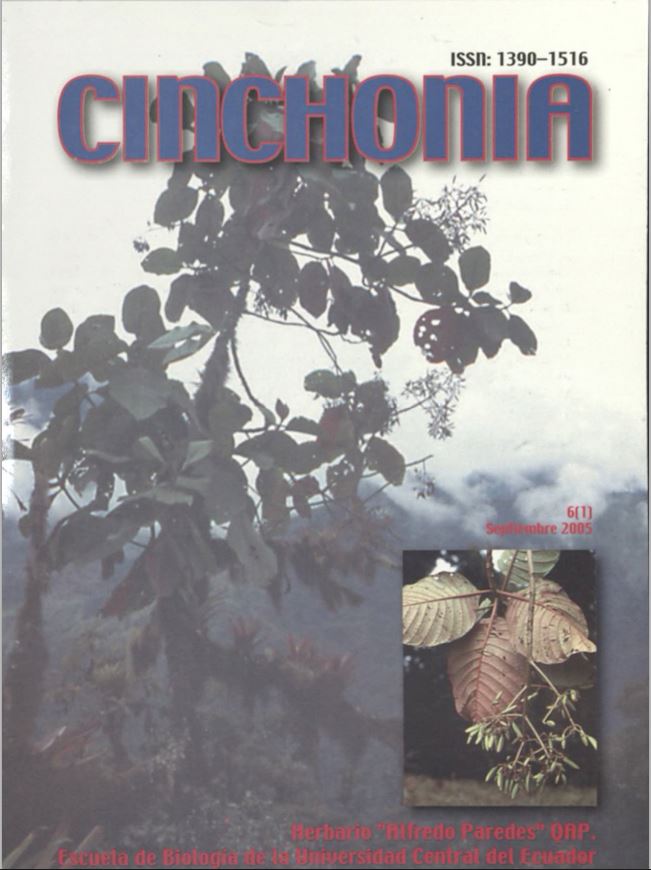DIVERSIDAD Y ETNOMICOLOGÍA DE MACROMYCETOS, CUENCA ALTA DEL RÍO OGLÁN, PASTAZA-ECUADOR
Main Article Content
Abstract
Field work was done m apm june, august. September. October and november 2003. m the Oglán Alto Protector Forest, properly oI the Kichwa Pablo López Community and the scientific station ot the Central Unrverwty of Ecuador. Aratuno Cotatty. Pastaza Province «ordenatas 01, 19'43*S-7r42-02^r 560 1100 m of altitude, zone of We Forest trop e* very humid and prpmontano pknn*Hr&n) Fo- 96 Gamboa: Hongos, rio Oglán res». Formation o» a v e g e t a b l e e v e r g r e e n l o r e s t Wo sel up in a mature forest, four megatransects of 50x2x10 and in a small farm, three sets of transects of 50x4x5. two of them lineales and one in fan shape, two sets in the study area and one in Arajuno small farm. This is to the comprobation of species in the study areas Additional to this, we complement the study with random collections. We collected macromycetos species with their own etnomicotogtca description, with help of the Kichwas informants. The dry process was partial done in the field and totally finished in Quito, after that, we identified, mounted and deposited m the macromycetos section in the Alfredo Paredes (GAP) and the duplicates in the Quito Herbanum (Q) of the Natural Science Institute of the Central University of Ecuador We calculated the Simpson's Diversity Index and Sorensen's Similarity Index, arithmetic mean and the Important Value Index. We found 185 species belong to 92 genera.34 families. 22 orderes and 3 groups. The diversity of individuals ot the random collection is 0.00148 (low diversity) meanwhile in the mature forest is 55 5 that in relation to the 145 speoes is interpreted like a low diversity median The similanty index in the random sample and the transects is 0.38%. According with the habitat. 64% are lignfcolas. 18% humicolas, 11% fitófago. 5% terrícola and 1% entomófago. rmcófago y micomzico. Accordmng with the habit: 86% are gregarious. 11% individual or solitary and 3% cespitoso. According with the forest type: inapnmary forest we 71%, foaowed by the small farm area with 16%. points or ntial paths 8% and in a bald spot forest 5%. 133 species have uses to the community. they have 58 Kichwa names between (anormal and tnnomiaies The Oglán Kichwa etraa gave names to the fungus (mushrooms) uxg the word ALAS. the generic ALA ts to place front of the names related with the morfotogy. traditions, mrtoiogy and organolépticas M e Polyporus tcnuiculus ‘Busum ala* denomnate Me that because of his hxnemo that heve hexagonal cavities Me to a cow stomach

